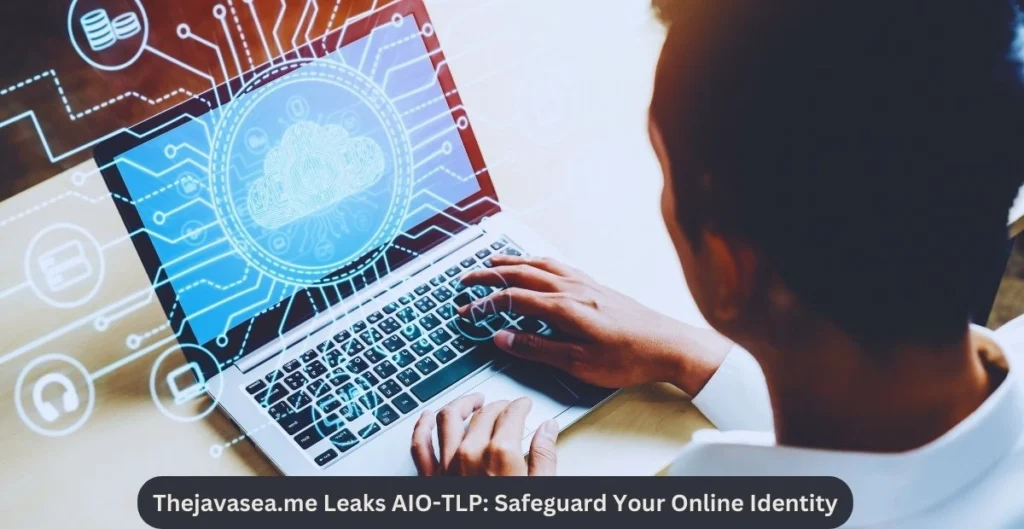have raised significant alarms in the cybersecurity world. This incident serves as a reminder of the increasing frequency and complexity of cyberattacks. The TheJavaSea.me Leaks AIO-TLP have not only impacted the platform’s users but also shed light on the vulnerabilities faced by digital services worldwide. In this article, we will dive into what these leaks entail, their consequences for users and businesses, and how to protect yourself from future threats.
Understanding TheJavaSea.me Leaks AIO-TLP
The TheJavaSea.me Leaks AIO-TLP refer to a massive data breach that compromised a variety of sensitive information, including user credentials, personal data, and possibly financial records. The “All-In-One Threat Leaks Package” (AIO-TLP) suggests that the stolen data has been bundled together, making it more dangerous and easier to exploit by cybercriminals. With platforms like TheJavaSea.me hosting millions of users, any breach of this magnitude can have widespread repercussions.
Cyberattacks like TheJavaSea.me Leaks AIO-TLP often occur when platforms fail to implement robust security measures, leaving systems vulnerable to exploitation. Whether through human error or software vulnerabilities, hackers can gain unauthorized access to critical information, putting millions of users at risk.
How Do Data Leaks Occur?

The TheJavaSea.me Leaks AIO-TLP are a prime example of how data leaks can happen due to various factors, including poor security infrastructure, outdated software, or insider threats. In many cases, attackers exploit misconfigurations in databases, weak passwords, or other security lapses that allow them to infiltrate a platform undetected. In the case of TheJavaSea.me Leaks AIO-TLP, the breach may have been facilitated by vulnerabilities that went unnoticed as the platform expanded rapidly.
Hackers often capitalize on these vulnerabilities to steal sensitive information, including login details, personal data, and even financial records, which can be sold or misused on the dark web.
Impact of TheJavaSea.me Leaks AIO-TLP: Risks for Users and Businesses
Personal Consequences
For users affected by the TheJavaSea.me Leaks AIO-TLP, the consequences can be severe. Identity theft is a major concern, as stolen credentials can be used to impersonate individuals or gain unauthorized access to other online accounts. In addition, leaked financial data can lead to unauthorized transactions, which may go unnoticed for extended periods.
Another danger of the TheJavaSea.me Leaks AIO-TLP is the long-term exposure of personal information on the dark web. Cybercriminals may continue to exploit this data for malicious purposes, including targeted phishing attacks or fraud.
Business Implications
For businesses, the TheJavaSea.me Leaks AIO-TLP serve as a stark warning about the importance of cybersecurity. The financial losses associated with a breach can be enormous, especially when considering the costs of legal settlements, recovery efforts, and damage to a company’s reputation. A single data breach can result in long-term harm, as consumers may lose trust in the platform and take their business elsewhere.
In the case of the TheJavaSea.me Leaks AIO-TLP, TheJavaSea.me has likely incurred significant expenses to remediate the breach, including hiring cybersecurity experts and reinforcing their defenses.
Broader Cybersecurity Threats
The TheJavaSea.me Leaks AIO-TLP also underscore the growing threat posed by the rapid commercialization of stolen data. Once this data is leaked, it can be used for a variety of malicious purposes, including launching further attacks on other platforms where users have reused their passwords or credentials. This interconnectedness amplifies the risk for users who fail to take immediate action to protect themselves.
How to Protect Yourself from TheJavaSea.me Leaks AIO-TLP

If you believe you may be affected by the TheJavaSea.me Leaks AIO-TLP, or want to protect yourself from future data leaks, here are some steps you should take:
- Strengthen Your Passwords: Always use unique, strong passwords for different websites and services. A password manager can help generate and store complex passwords securely, making it harder for hackers to gain access to your accounts.
- Enable Two-Factor Authentication (2FA): Two-factor authentication adds an extra layer of security, ensuring that even if your password is stolen, cybercriminals still cannot access your account without a second form of verification.
- Monitor Your Accounts: Regularly check your online accounts for unusual activity, including unauthorized logins or transactions. Many services offer alert systems to notify users of suspicious behavior.
- Update Security Software: Ensure your devices are equipped with the latest antivirus and anti-malware programs. These can help detect and block any threats resulting from the TheJavaSea.me Leaks AIO-TLP.
- Stay Informed: Follow cybersecurity news to stay aware of new threats and breaches like TheJavaSea.me Leaks AIO-TLP. Knowledge is your first line of defense against evolving cyber risks.
TheJavaSea.me Response and Lessons Learned
In the aftermath of the TheJavaSea.me Leaks AIO-TLP, the platform has taken several steps to mitigate the damage and reassure its users. These measures include resetting passwords, temporarily disabling certain features, and working with third-party cybersecurity experts to enhance the platform’s defenses. These actions aim to restore trust and prevent similar incidents in the future.
The TheJavaSea.me Leaks AIO-TLP should serve as a wake-up call for other digital services, urging them to reassess their security protocols and invest in stronger defenses. As cyberattacks become more sophisticated, platforms must prioritize data protection and user privacy to avoid falling victim to similar breaches.
Future Trends in Data Protection

Looking ahead, data breaches like TheJavaSea.me Leaks AIO-TLP will likely drive innovation in the field of cybersecurity. Privacy-focused technologies, such as blockchain and advanced encryption methods, are becoming more popular as organizations seek to protect user data from unauthorized access.
Additionally, there is an increasing demand for more user-centric security practices, such as zero-trust models and continuous authentication, which can help prevent data breaches like TheJavaSea.me Leaks AIO-TLP from occurring in the first place.
Conclusion
The TheJavaSea.me Leaks AIO-TLP incident highlights the critical importance of cybersecurity in today’s interconnected digital world. Both businesses and individuals must take proactive steps to protect their data and ensure that they are prepared to respond to potential threats. By learning from breaches like TheJavaSea.me Leaks AIO-TLP, users can minimize their risks and stay safe in the ever-evolving landscape of cybersecurity.
FAQs
1. What is AIO-TLP?
A. AIO-TLP stands for “All-In-One Threat Leaks Package,” referring to data breaches involving various types of sensitive information bundled together.
2. How do hackers monetize stolen data?
A. Stolen data is often sold on the dark web, used in phishing campaigns, or employed to conduct further cyberattacks.
3. What immediate steps should I take after a breach?
A. Change passwords, enable two-factor authentication, monitor your accounts, and stay alert to phishing attempts.
4. Can TheJavaSea.me users sue the platform?
A. Yes, affected users may file lawsuits seeking compensation for damages caused by the breach.




